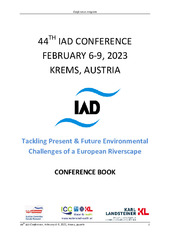Приказ основних података о документу
Applicability of wastewater based epidemiology in countries with poor wastewater treatment – COVID-19 case study in Serbia
| dc.creator | Kolarević, Stoimir | |
| dc.creator | Adrienn, Micsinai | |
| dc.creator | Szanto-Egesz, Reka | |
| dc.creator | Lukacs, Alena | |
| dc.creator | Kračun-Kolarević, Margareta | |
| dc.creator | Jovanović Marić, Jovana | |
| dc.creator | Đorđević, Ana | |
| dc.creator | Vojnović-Milutinović, Danijela | |
| dc.creator | Kirschner, Alexander | |
| dc.creator | Farnleitner, Andreas | |
| dc.creator | Linke, Rita | |
| dc.creator | Đukić, Aleksandar | |
| dc.creator | Kostić, Jovana | |
| dc.creator | Sunjog, Karolina | |
| dc.creator | Paunović, Momir | |
| dc.date.accessioned | 2024-03-15T09:43:53Z | |
| dc.date.available | 2024-03-15T09:43:53Z | |
| dc.date.issued | 2023 | |
| dc.identifier.uri | http://radar.ibiss.bg.ac.rs/handle/123456789/6591 | |
| dc.description.abstract | Pollution of natural water bodies is one of the biggest challenges in developing countries, such as Serbia, where wastewater is discharged directly into the recipients without proper treatment and poses serious threats to surface water quality, general safety and environmental health. Numerous pathogenic microorganisms, bacteria, viruses, protozoa and helminthes may reach surface waters and eventually contaminate groundwater. Despites its extreme importance in this case, implementation of wastewater-based epidemiology is a challenge for developing countries, as the majority of households are not connected to sewerage systems. Within our research, we have placed major focus on recipients of wastewaters as an alternative of targeting raw wastewater. During the fourth COVID-19 wave in Serbia that started in late February 2021 multiple water samples were collected at 12 sites at Sava and Danube Rivers in the Belgrade city area which are under the impact of untreated wastewaters. SARS-CoV-2 RNA was quantified using RT-qPCR with primer sets targeting nucleocapsid (N1 and N2) and envelope (E) protein genes. Microbiological (standard fecal indicator bacteria and microbial faecal source tracking markers), epidemiological, physico-chemical and hydro-morphological parameters were analysed in parallel. Out of 44 samples analyzed, 31 were positive for at least one of the target regions of SARS-CoV-2. The results indicated that surveillance of SARS-CoV-2 RNA in surface waters in context with the large amount of epidemiological and environmental metadata can be used as epidemiological early-warning tool in countries with poor wastewater treatment. | sr |
| dc.language.iso | en | sr |
| dc.publisher | Austrian Committee - International Association for Danube Research | sr |
| dc.rights | openAccess | sr |
| dc.source | Conference Book: 44th IAD conference: Tackling Present & Future Environmental Challenges of a European Riverscape; 2023 Feb 6-9; Krems, Austria | sr |
| dc.title | Applicability of wastewater based epidemiology in countries with poor wastewater treatment – COVID-19 case study in Serbia | sr |
| dc.type | conferenceObject | sr |
| dc.rights.license | ARR | sr |
| dc.rights.holder | © 2023 by the Austrian Committee - International Association for Danube Research | sr |
| dc.description.other | Conference Book: 44th IAD conference: Tackling Present & Future Environmental Challenges of a European Riverscape; 2023 Feb 6-9; Krems, Austria. Austrian Committee - International Association for Danube Research; 2023. p. 11. | sr |
| dc.citation.spage | 11 | |
| dc.type.version | publishedVersion | sr |
| dc.identifier.fulltext | https://radar.ibiss.bg.ac.rs/bitstream/id/17057/2023_AbstractBook_44th_IAD_conf_Krems2.pdf | |
| dc.citation.rank | M34 | |
| dc.identifier.rcub | https://hdl.handle.net/21.15107/rcub_ibiss_6591 |

